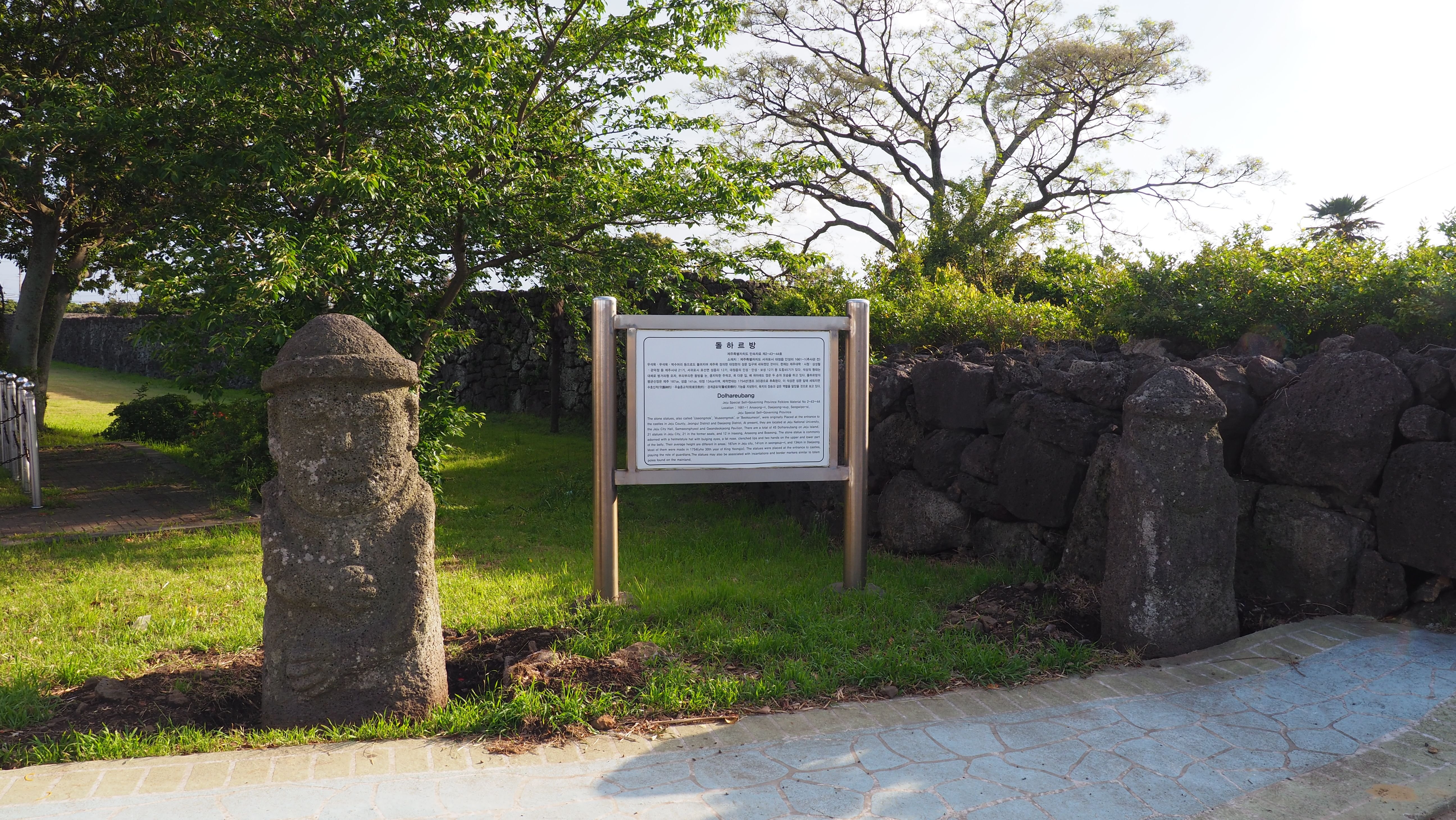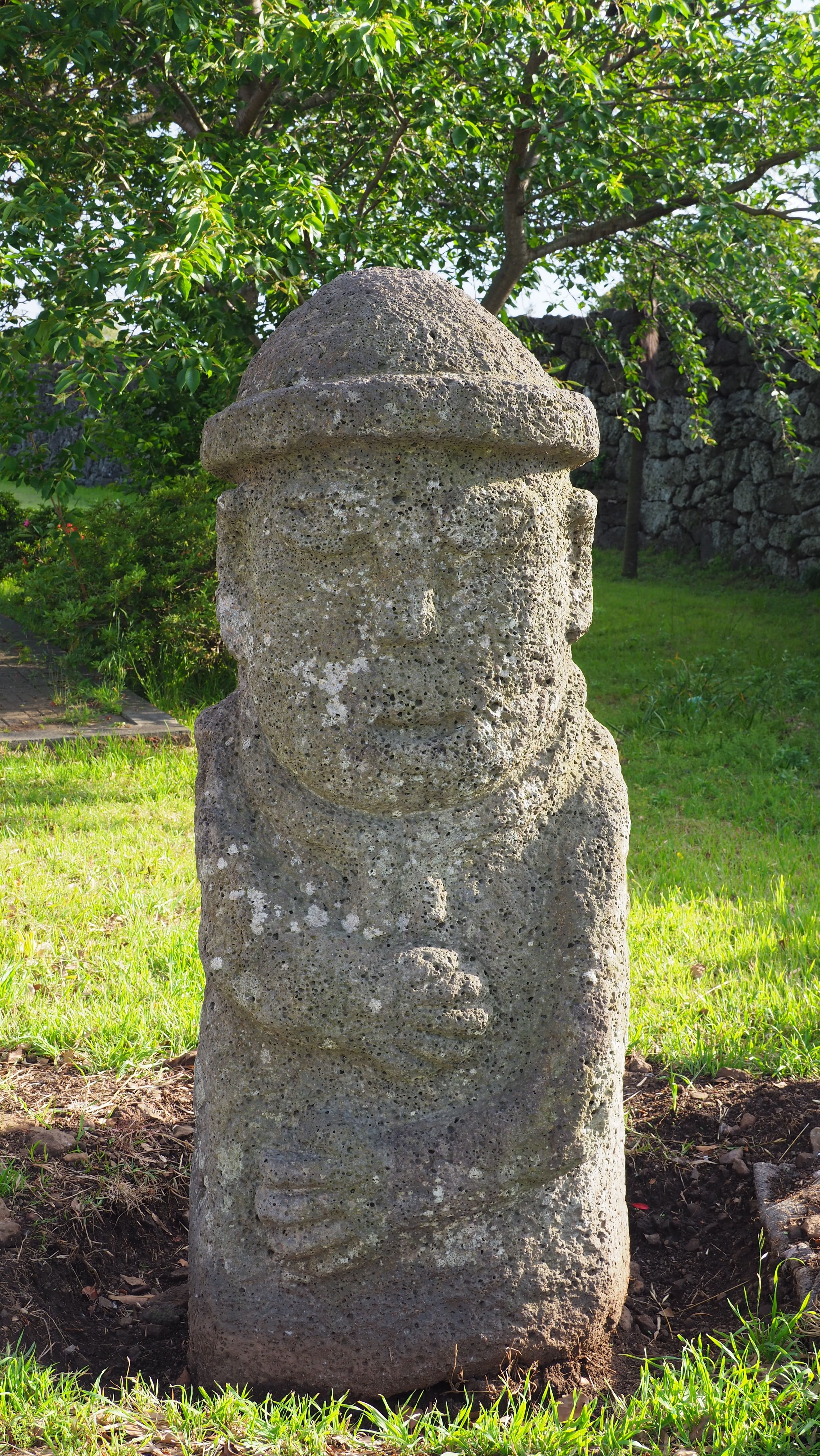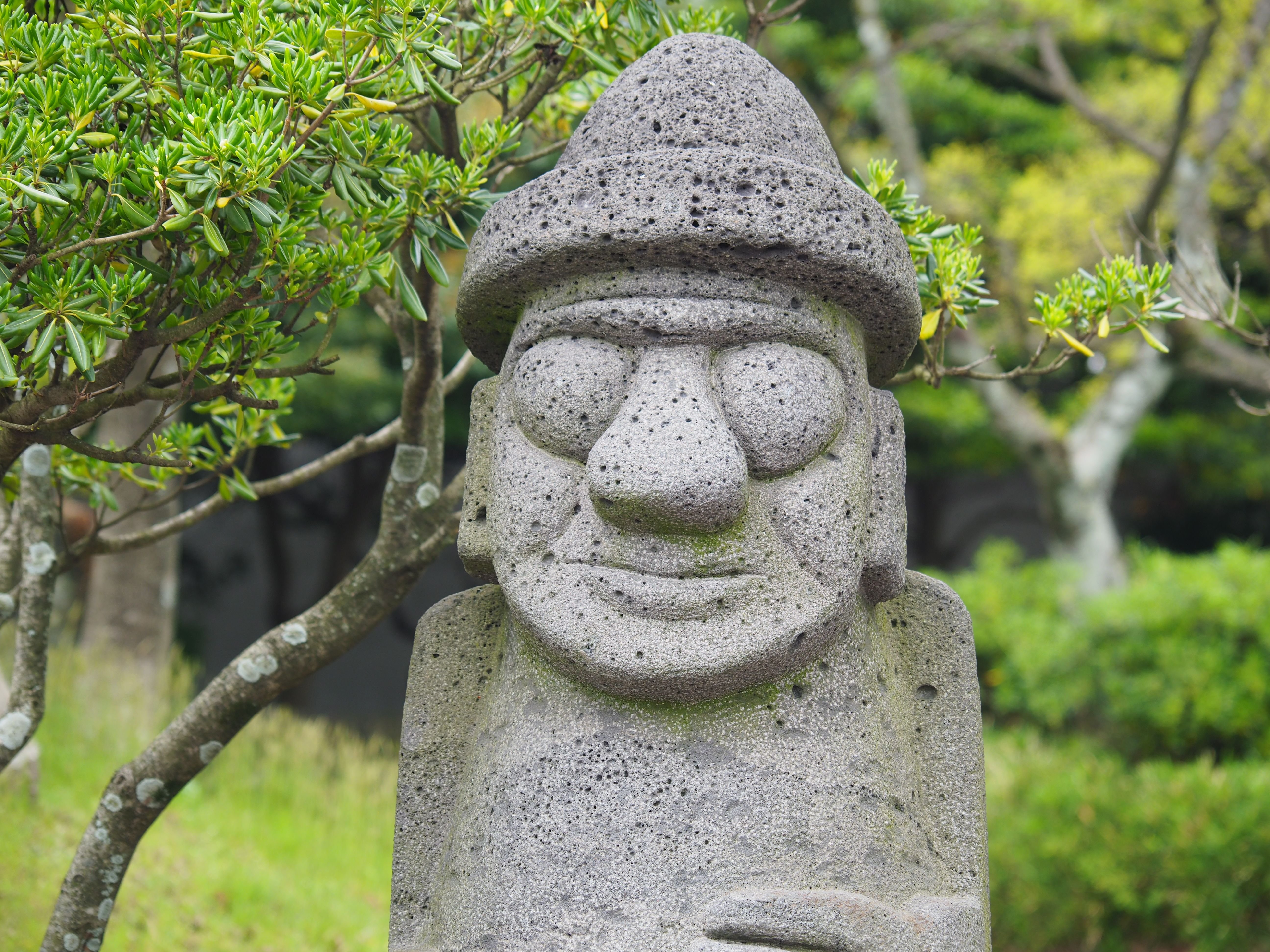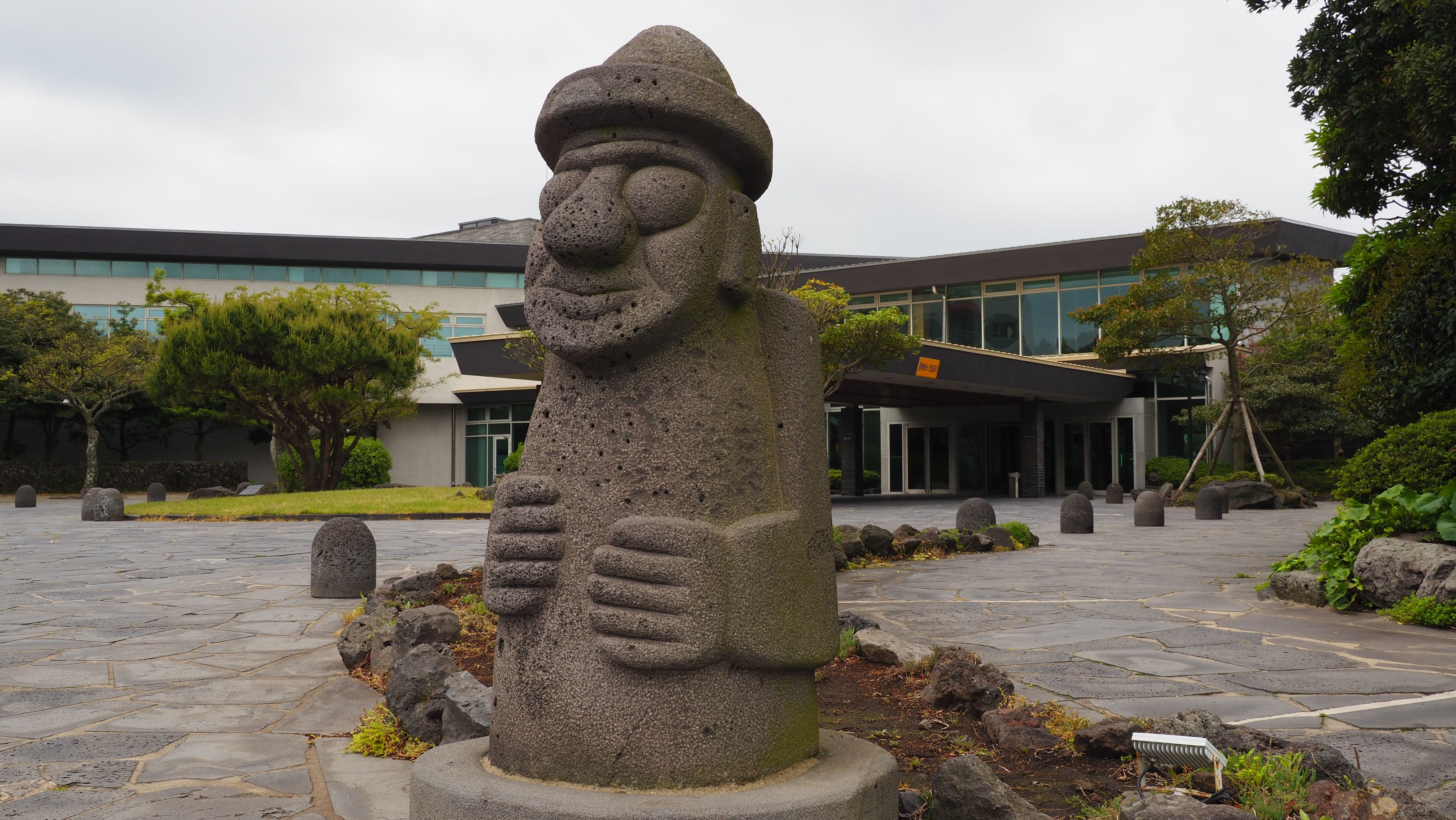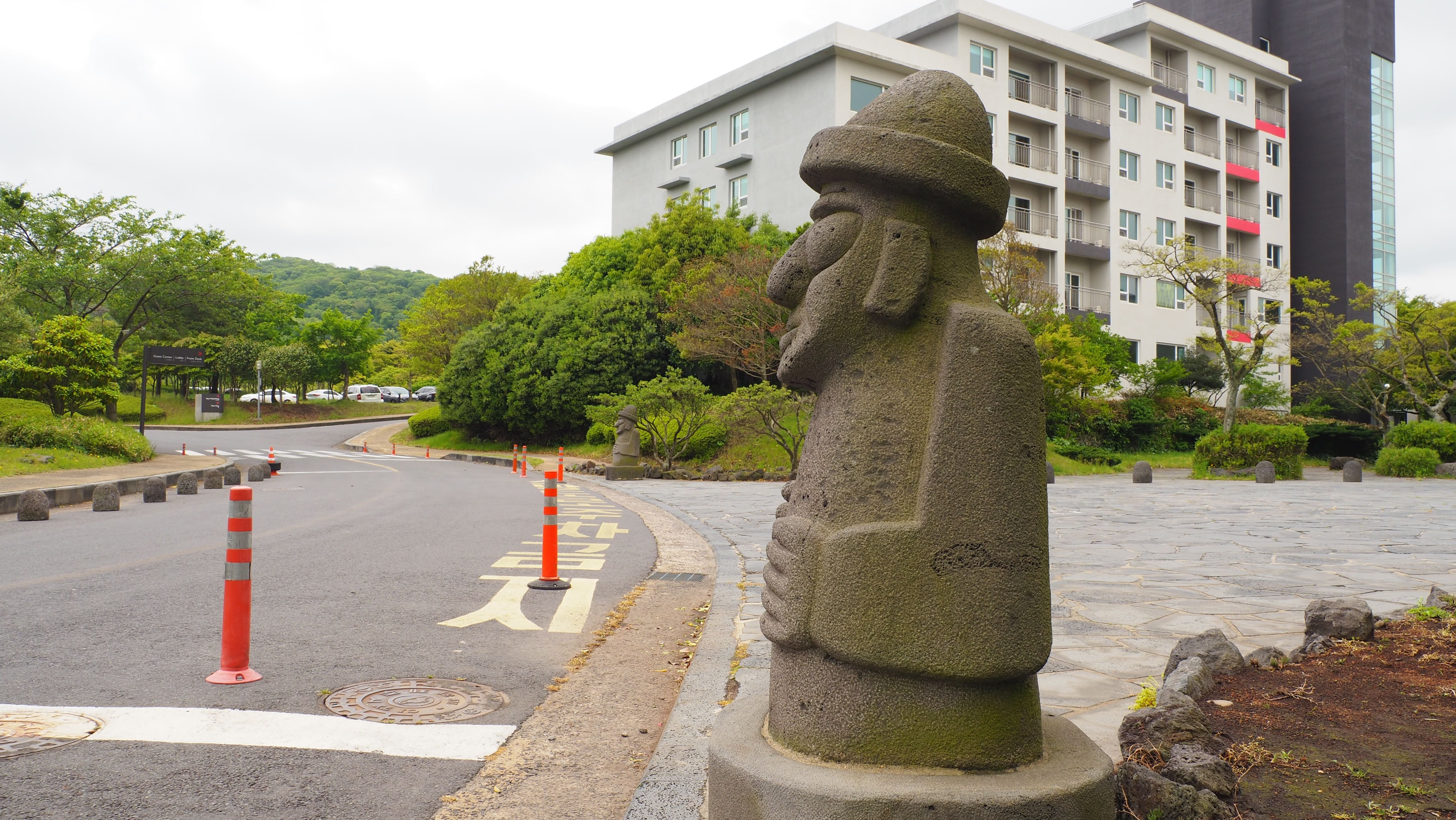When you visit Jeju island, you can see some stone sculptures name of Dol Harbang in anywhere
This Dol Harbang was located in the front of the fortress wall in the southern part of the island.
Dol harbang seemed to mean ‘stone grandfather’
The origin of this strange stone sculptures were uncertain.
Only some scholars estimated that those sculptures could be traced to the times of Mongolian invasion.
They suggested the hat of the sculptures as an evidence of their theory.
Actually it looked like the hat of Mongolian soldiers.
In the time of Mongolian invasion, Jeju island was the base of Mongolian armies to attack to Japan. At that time of Mongolian invasion, they insisted that Dol harbang was made.
But it seemed not so reasonable as the explanation for the origin of Dol harbang.
Usually nobody want to make a monument for the invader.
More over Dol harbang in Jeju believed as the guardian diety, why people in Jeju would’ve believed the most cruel Mongolian soldier as their Guardian diety.
In my opinion, Dol harbang seemed to have been related with the Polynesian big stone culture.
Up until now there is the Polynesian tribe in Japan, in this respect Jeju also had some kinds of close relations with the polynesian culture.
Of course, this theory is just my personal opinion having no proof and evidence.
So I’d like to visit the polynesian culture in near time.
Is there any similarity between Dol harbang and Big stone sculptures in Polynesia.
Below are Dol harbangs in Jeju island.
They had built Dol harbangs at the entrance of important buildings and fortress as the symbol of the guardian deity.

